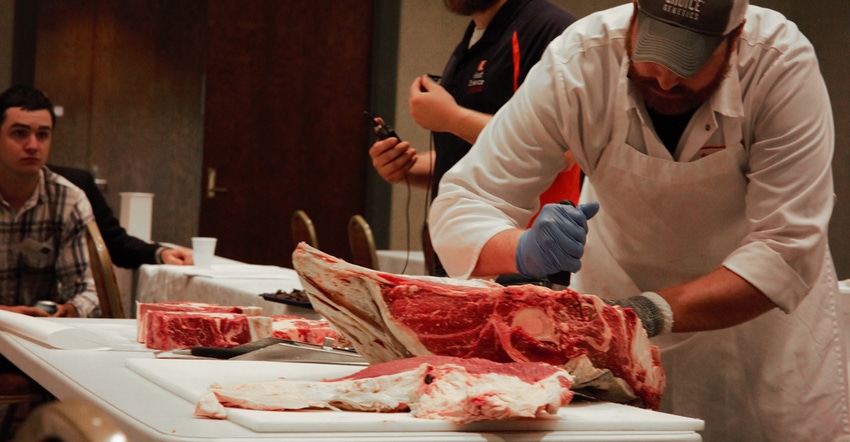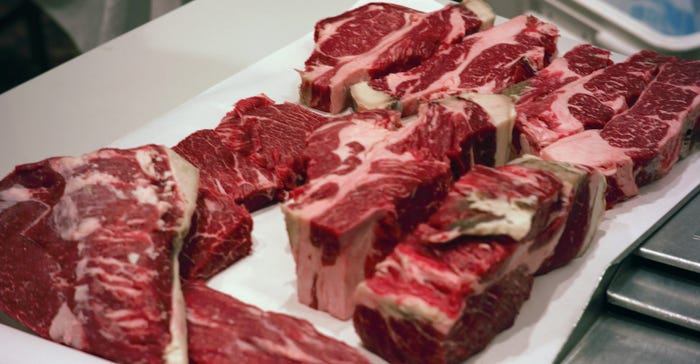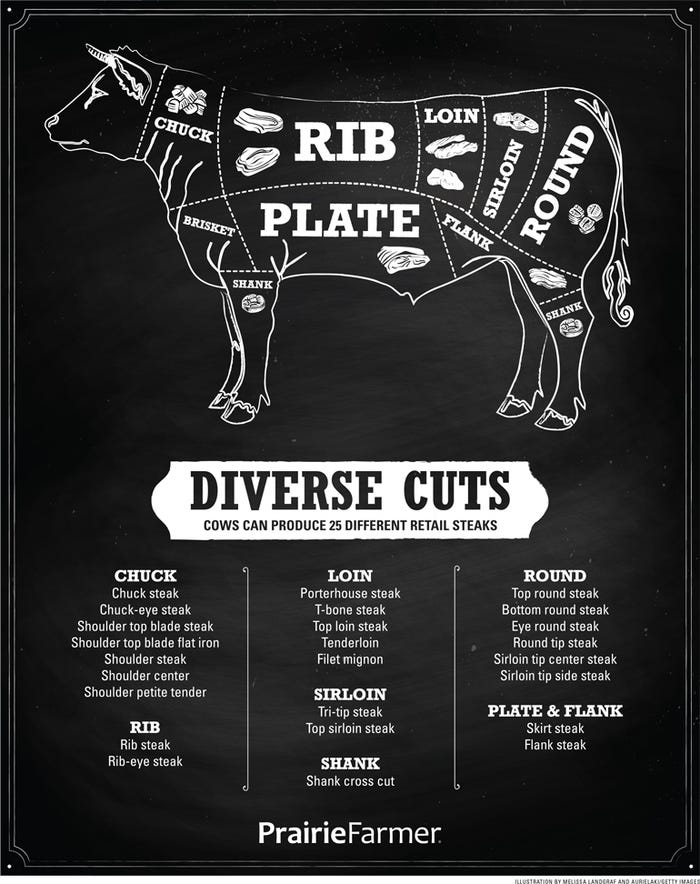
Of all the ways consumers eat beef, steaks fetch producers the highest premium. Streaks of marbling among the ribs bring out the tenderness in rib-eyes, and the less marbled but likewise tender loin section of the cow produces the priciest cuts.
There’s more real estate to a cow than the ribs and loin, however. Butchers across the country are starting to sell more steaks from unconventional areas of the cow that are well-marbled, such as cuts of the shoulder chuck.
This is the hardest-worked part of a cow, and it’s so tough, it’s usually saved for roasts. But since demand is rising for both cheaper and smaller steaks, butchers have been able to capitalize on the chuck.
“In our square cut shoulder, we typically think of that as a portion of the animal that is not going to produce that many restaurant-end steaks. We’ve now been able to pick apart different muscles and utilize them a little better,” says Brandon Klehm, meat science instructor and meat judging coach at the University of Illinois. He notes there’s a muscle that looks like a tenderloin in the chuck that can be split into steaks and cooked, albeit less quickly.
“Shoulders have connective tissue, which we were always a little worried could lead to some tougher eating experiences, but with slower cooking — less direct time on the grill — we can take that cut and make it into a pretty juicy steak,” Klehm says, adding vinegar, marinades and jaccarding, or tenderizing, help turn chuck cuts into affordable steaks that win in taste tests.
One of the most popular chuck steaks at the UI Meat Science Lab where Klehm works is tucked deep in the center of the under-blade and sells for $6.99 a pound. It’s called a Denver cut and it’s only 4 to 6 ounces.
Despite the Denver cut’s size, it’s naturally tender and has decent marbling, making it a high-quality steak that doesn’t need to be tenderized or slow-cooked.
“I haven’t seen Denvers in your Meijers, Walmarts or Schnuck’s, but I know that several mom-and-pop shops have started making a couple of those just because it’s a new, interesting cut,” Klehm says. “It gets people inside to see what it’s all about.”

IN DEMAND: Brandon Klehm, meat science instructor and meat judging coach at the University of Illinois, says smaller and cheaper cuts of steak are gaining popularity.

While it’s common to take the eye out of the chuck and roast it all day, chuck-eye steaks can be made out of the more posterior end of the eye that borders the rib-eye. Producers can make smaller chuck roasts and shave off about three steaks to bring in more revenue, as those cuts fetch a premium under the label Delmonico. They, along with much larger rib-eye cap steaks, contain the spinalis dorsi, the second most tender muscle in the cow.
“The steak that has really come into a spotlight, especially in restaurants, is the flat iron,” Klehm says. “That’s partly because it’s fairly highly marbled, as most cuts are from the front of the animal. But it’s also the fifth or fourth most-tender cut out of this animal. We never used to use it because of a big thick piece of connective tissue that laid between these two steaks.” They get around that by cutting flat irons in half, making a more portion-friendly size.

About the Author(s)
You May Also Like




